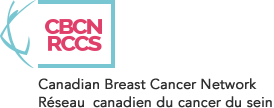By continuing to use our site, you consent to the processing of cookies, user data (location information, type and version of the OS, the type and version of the browser, the type of device and the resolution of its screen, the source of where the user came from, from which site or for what advertisement, language OS and Browser, which pages are opened and to which buttons the user presses, ip-address) for the purpose of site functioning, retargeting and statistical surveys and reviews. If you do not want your data to be processed, please leave the site.
The Voice of People With Breast Cancer
ACTION
Our Campaigns
Beyond the Stereotypes:
Aware of Risks. Aware of Myths.
Breast Cancer Awareness Month is a time to challenge common myths and open up the conversation about who is truly at risk. While many people believe breast cancer only affects older women, the reality is broader. Men, young people, and those with no family history can and do face a breast cancer diagnosis. By understanding that risk exists for many different people, we can break down misconceptions, encourage early awareness, and create space for more informed conversations about breast health.
This October, we invite you to learn more about your breast cancer risks and myths, and explore ways to take charge of your breast health.
- Breast Cancer Risks
-
- Examining and Screening
-
Know your normal: Knowing your normal is a simple but important way to look after your breast health. When you are familiar with how your breasts usually look and feel, it is easier to notice when something changes. If something seems out of place you can then reach out to a doctor. They can guide you on whether screening is needed. For tips and tools on how to know your normal, check out Know Your Lemons.
Don’t wait for symptoms: Going for a breast cancer screening is a simple but powerful step you can take to protect your health. Yet in 2024, 32% of females told Stats Can they skipped a mammogram because they did not think it was necessary. The truth is, screening can find breast cancer early, often before any symptoms appear. Don’t wait for signs. Learn more about screening here.
Advocate for yourself: Sometimes we need to be advocates for our own health. In 2024, 1 in 5 women told Stats Can they hadn’t had a mammogram was because their health care provider did not bring it up, and 12% of women hadn’t gone because of fear or discomfort. But with more women under the age of 50 being diagnosed with breast cancer, waiting could limit your options. Speaking up could mean finding breast cancer earlier, when there are more treatment options and better chances of successful outcomes. Not sure what to ask? Here’s a helpful checklist to your next doctor’s appointment.
- Understanding Risk
-
Know your risk: Did you know not everyone is at the same risk of developing breast cancer? Most people are at an average risk level which includes factors like age, family history without known genetic mutations, lifestyle choices, and reproductive history (like the age when periods started or menopause began). You may be at a higher risk if you have a close family member with breast cancer, if a biopsy has shown atypical hyperplasia or lobular carcinoma in-situ (LCIS), or if you have dense breast tissue. Knowing your risk helps to make informed choices about screening. Learn more about risk factors here.
Ask about hereditary risk: Triple-negative breast cancer or TNBC is a subtype that can be more challenging to treat than other forms of breast cancer. Some people are more likely to develop TNBC, including those who are premenopausal or under the age of 50; people with an inherited BRCA1 mutation; Black and Hispanic women and having dense breast tissue. Learn more about TNBC and its treatment options here.
Understand TNBC: Inheriting certain genetic mutations can increase your risk of breast cancer; this is known as hereditary breast cancer. The most well-known genes are the BRCA1/BRCA2 genes. Anyone, male or female, can carry these genes, which means they mutation can be passed down from either your mother’s or your father’s side of the family. This is why genetic testing is so important when there is a family history of breast cancer. Learn more about hereditary breast cancer with our Fact Sheet.
- Assessing Risk
-
Use online tools to check your risk: Understanding your breast cancer risk can help guide important decisions about screening and genetic testing. Here are 3 tools that can help:
- Tyrer-Cuzick Risk Assessment Calculator: combines personal health info, biopsy results, and family history to estimate your 10-year and lifetime risk
- NCI Breast Cancer Risk Assessment Tool: Estimates both your 5-year and lifetime risk to age 90 using factors like age, reproductive history, family history and hormone exposure
- Ontario Health’s MyCancerIQ: A Canadian tool (also available in French) that includes lifestyle and family history, plus tips to help lower your risk
These tools can give you a more accurate picture of your risk and can support conversations with your doctor.
Ask if genetic testing is right for you: Genetic testing can be a powerful tool in understanding your risk of developing breast cancer. By identifying inherited mutations in certain genes like BRCA1 and BRCA2, testing can provide valuable information for making proactive health decisions—such as starting breast screening earlier, taking preventive medication, or discussing risk-reducing surgery with your doctor. Not everyone needs genetic testing, but if you have a strong family history of breast or ovarian cancer, it may be worth asking your healthcare provider if it’s right for you. Learn more about genetic testing with our Fact Sheet.
- Addressing Risk
-
Push for national guidelines that reflect individual risk: Canada’s national breast cancer screening guidelines are designed for people at average risk, which is most people. But if your risk is higher than average, there are currently no national guidelines to help you know the best screening plan for you. This includes questions like which type of screening is most suitable—mammogram, ultrasound, or both—and how often you should be screened, such as every year or every two years. Having national screening guidelines that take individual risk into account is important for preventing breast cancer and finding it early. Learn how you can ask for national guidelines to be established by reading our new guide, Risk-Stratified Screening: Advocating for Breast Cancer Screening Guidelines Based on Risk.
Understand breast density: People with dense breasts (especially BI-RADS C or D) have a higher risk of breast cancer. The risk is similar to having a first-degree relative with the disease. Dense tissue appears white on a mammogram, just like tumours, which makes cancer harder to detect. Learn how this affects your risk level and how to advocate for better screening techniques for people with dense breast tissue in our guide Understanding Breast Density.
Match your screening plan to your personal risk level: Your risk level determines your personal risk of developing breast cancer throughout your lifetime. Knowing your risk of developing breast cancer helps determine when and how often you should be screened for breast cancer, as well as what kind of screening is the best option for you. Knowing your risk level is the first step toward making sure you get the right screening at the right time. Check out our screening pathways fact sheet Breast Cancer: Know Your Risk, Know Your Options for more guidance.
- Breast Cancer Myths
-
“Men can’t get breast cancer!” When most people think of someone with breast cancer, they think about women. Many are surprised to find out that men can also get breast cancer. Breast cancer develops in breast tissue, and men have breast tissue too, even though they can’t produce milk. By challenging the myth that men don’t get breast cancer, we make way for greater awareness, earlier detection, and better support for everyone affected. This is an important step toward breaking down stigma and ensuring that all patients, regardless of sex or gender, receive the care they deserve. Explore our blog post that breaks down the myth that breast cancer is a woman’s disease.
“You’re too young to have breast cancer!” If you are someone under the age of 50, there are a lot of important life events that you can still imagine in your future; however, getting diagnosed with breast cancer is most likely not on that list, and for many young people, especially women, it never will be. However, there has been a growing number of younger women over the past few decades who are developing breast cancer. Historically, breast cancer has been thought of as an “older person’s disease”; this attitude of dismissal can lead to delays in both detection and diagnosis. Read our blog post that exposes the issues associated with the myth that only older women get breast cancer.
- Breast Cancer Resources
-
- Breast Health 101
- Breast Cancer in Canada
- Metastatic (Stage IV) Breast Cancer in Canada
- Breast Cancer: Know Your Risk, Know Your Options
- 10 Questions to Help You Understand Your Breast Cancer Risk
- Understanding Risk Factors
- Hereditary Breast Cancer Factsheet
- Triple Negative Breast Cancer
- Advocacy Guide: Risk-Stratified Screening: Advocating for Breast Cancer Screening Guidelines Based on Risk
- Advocacy Guide: Understanding Breast Density
Other Resources:
- Know Your Lemons
- Tyrer-Cuzick Risk Assessment Calculator
- NCI Breast Cancer Risk Assessment Tool
- Ontario Health’s MyCancerIQ
- Statistics Canada Health Fact Sheets: Colorectal, cervical and breast cancer screening tests, 2024
SHARE




